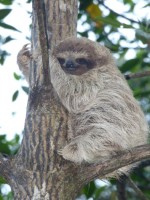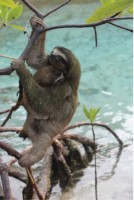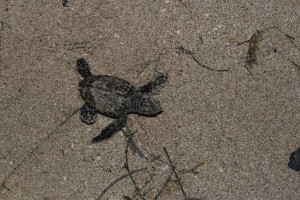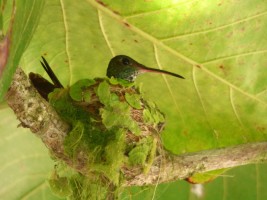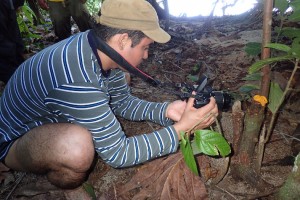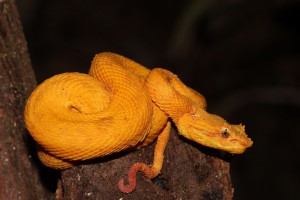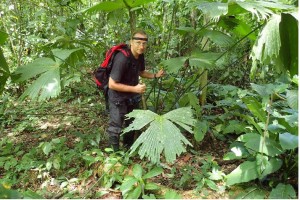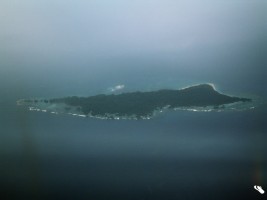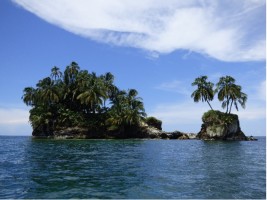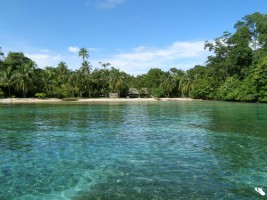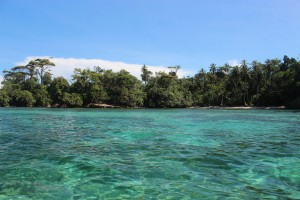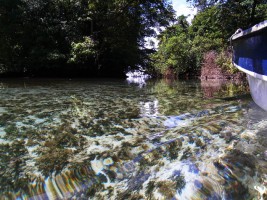Empowering Communities to Protect Declining Ecosystems: Shielding from extinction the Pigmy Three-toed Sloth (Bradypus pygmaeus) Phase II
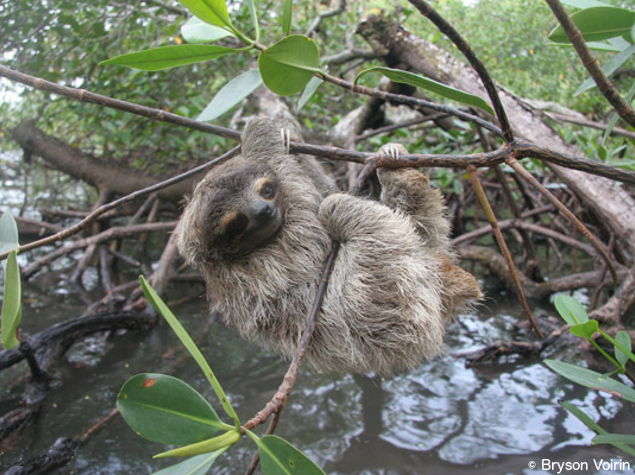
The pygmy sloth was only described scientifically in 2001, and is geographically restricted to Escudo de Veraguas, a small island located northeast from the coastline of Panama. They were thought to exclusively inhabit the red mangrove and their dependence on this restricted habitat within a small island heightens their vulnerability. Though local communities are taking steps to protect the species, it remains listed as Critically Endangered on the IUCN Red List.
The island is also the only habitat for others Critically Endangered species: the solitary fruit-bat, the maritime worm salamander and four bird sub-species. One endemic plant, the Escudo Zamia has only a few hundred individuals left. Finally, its beach area is a globally important nesting site for leatherback turtles and it is ringed by 100 hectares of coral.
This is the second collaboration between Fondation Ensemble and Conavi.
The aim of this second phase is to consolidate hard-won gains in first phase and significantly secure the long-term conservation of Escudo biodiversity. During this first part, a counting of pigmy sloth individuals has been done, some of them have been equipped with GPS and accelerometers. Feces and hairs have been collected to study the genetic health of the population. Local communities adopted alternative cooking technology, to reduce their dependence on charcoal and firewood produced through deforestation of the mangrove. Regarding management, a Protected Area Steering Committee has been established while patrolling and law enforcement are actively being carried out. Finally, 250 people (fishermen, local authorities, police, teachers) have been sensitized to the island biodiversity.
Improvements of protection infrastructure, started in the first part, are yet to be completed and a visitor fee system needs to be set up to financially sustain management. Since the local population dependence on fish capture has entered into a crisis due to depletion of the local fishery, they do require a reliable means of income generation.
To sum up, the main objective of this program is to secure the survival of Escudo’s unique species by means of empowering the Ngobe Bugle indigenous people to preserve their only habitat.
To do so, various secondary objectives have been set up:
- Enforce protection measures, including improvement in protection and visitors infrastructure, to stop illegal traffic and avoid the destruction of mangroves, hardwoods and coral reefs. Joint activities will continue, being conducted with the Ngobe Bugle indigenous authorities and local indigenous organizations.
- Complete the population and behavioral ecology survey of pigmy sloths to have a reliable estimate of individuals and begin the permanent monitoring program. Sampling strip transects will be placed on the entire island. Two counts will be done to know if there is any increase/decrease in the population. The behavioral ecology will be studied based on the sloths fitted with accelerometers and GPS and 5 more will be equipped.
- Carry out research on the solitary fruit-bat to know its population and behavioral ecology. An emergence count will be accomplished by capturing bats while they are feeding or commuting. In addition, the research team will record Artibeus incomitatus dietary by identifying seeds contained in fecal samples. The information obtained will be updated in the IUCN Red List (as well as for the pigmy sloth).
- Conduct training for 25 fishermen to engage in small-scale ecotourism as a reliable source of sustainable income. Also Conavi forecasts to conduct workshops with field researchers to instruct 120 dwellers on the island biodiversity, to set up field activities consisting on the collection of seeds of tree species to establish a nursery (including the Escudo Zamia), collect coconuts for local coconut oil production (a commercially valuable good marketed throughout the Caribbean Coast) and to continue promotion of alternative cooking technologies.
- Strengthen the Protected Area Steering Committee by means of establishing a visitor fee system to enable financially sustainable management and provide support to local coastal communities. In doing so, the Committee will secure local people’s support to conservation.
Finally the project team will take advantage of its work in Escudo to obtain a glimpse in potentially new species by installing 5 camera traps.
FINAL SUMMARY REPORT (SEPTEMBER 2017):
Over the funded period, CONAVI has:
- Led a study on the various endemic species of the island (pigmy sloth, solitary fruit-bat, …) ;
- Set up a protected area and fishing steering committee, the whole being financed by a royalty requested to the visitors of the island;
- Set up mooring buoys and signages;
- Trained fishermen to ecotourism and alert local communities to the importance of protecting the environment.
This program will now scale up thanks to a support from the Panama Ministry of Environment and Conservation International with a USD 250,000 grant.
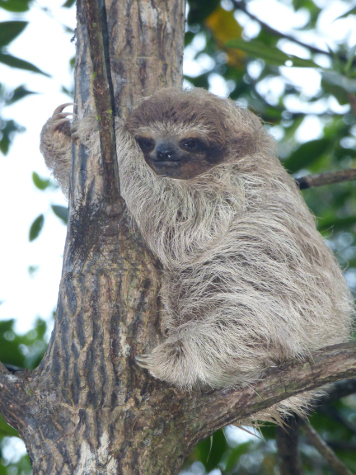
Pregnant femaly pigmy sloth perched on a tree © Abel Batista/CONAVI and Bryson Voirin

Female pigmy sloth and her newborn in the mangrove forest © Bryson Voirin
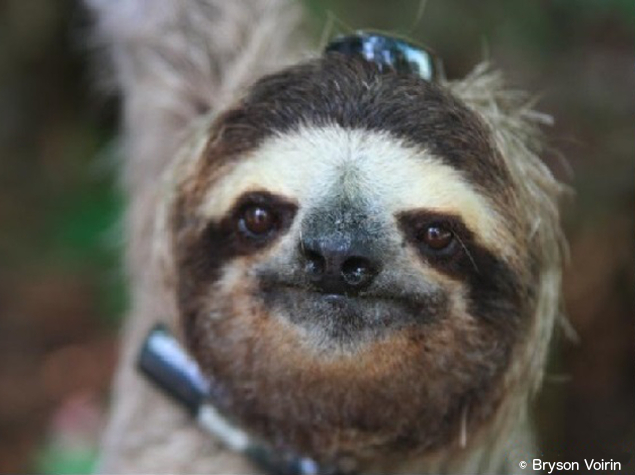
Pigmy Three-toed Sloth © Bryson Voirin
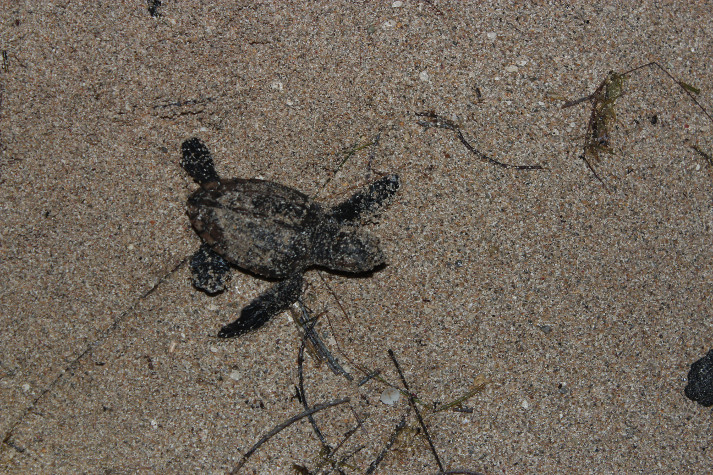
Olive ridley nestling hurrying for the sea in Escudo's beach area © Abel Batista/CONAVI and Bryson Voirin
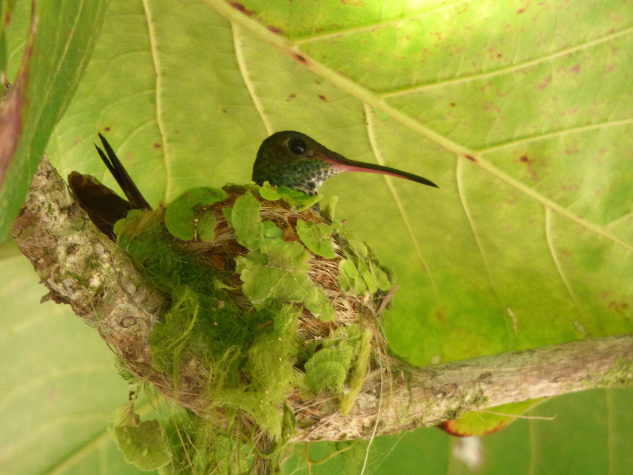
Nesting Escudo hummingbird (Amazilia tzacatl handleyii), an island endemic © Abel Batista/CONAVI and Bryson Voirin
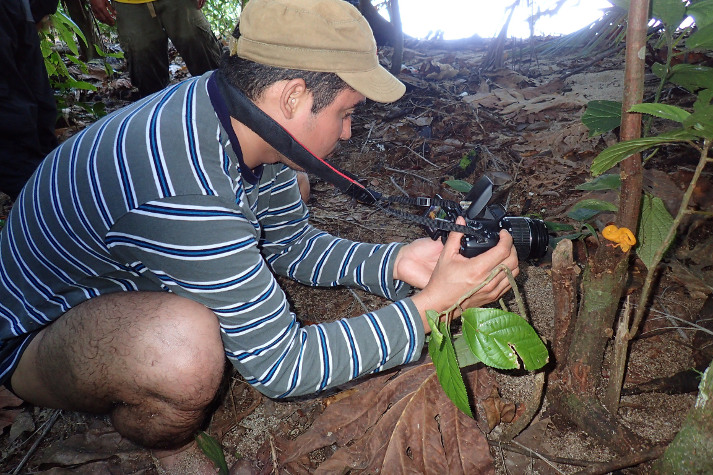
A. Batista taking a picture of a potentially new snake species © Abel Batista/CONAVI and Bryson Voirin
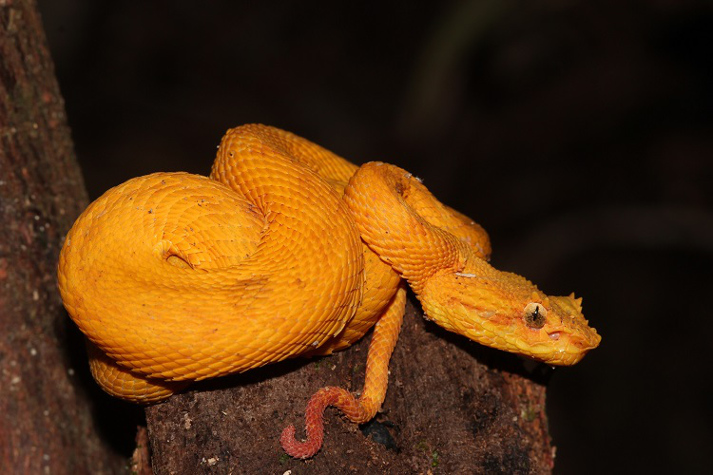
Enhanced image of potentially new snake species © Abel Batista/CONAVI and Bryson Voirin
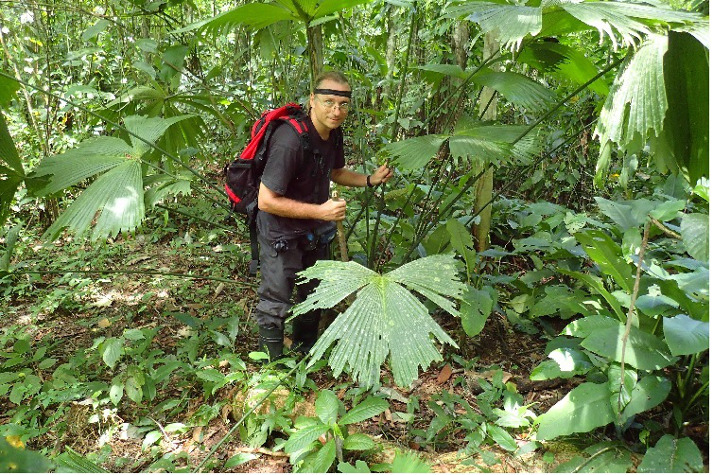
Milan Kesely, from Palaky University, searching for new frog species in Escudo © Abel Batista/CONAVI and Bryson Voirin
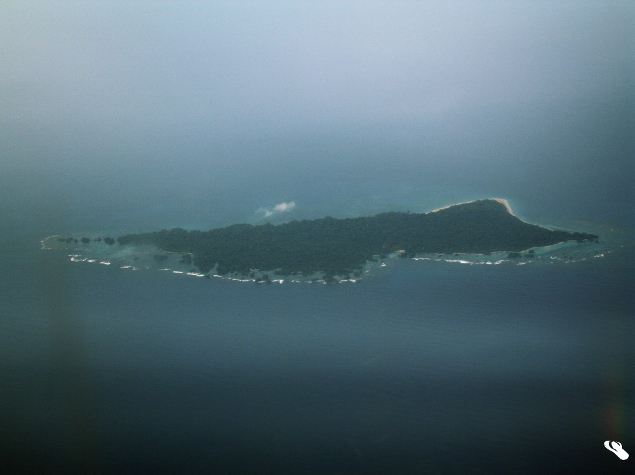
Escudo Aerial View
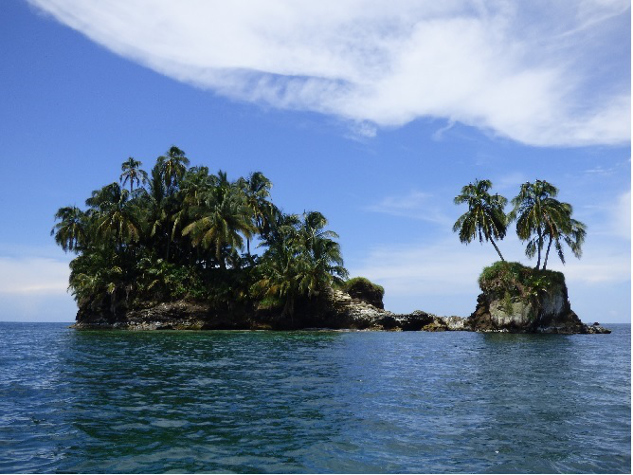
Cay close to Escudo Island © Abel Batista/CONAVI and Bryson Voirin
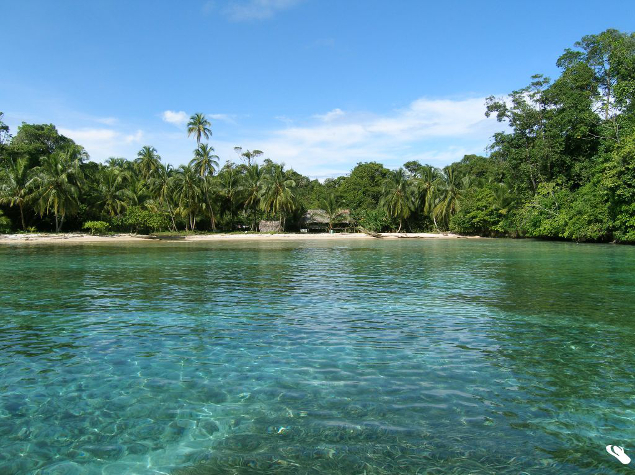
Escudo Fishermen's Village
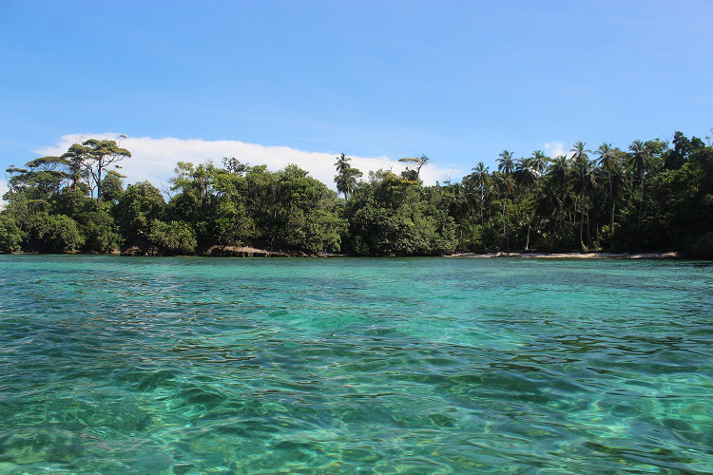
Approaching Escudo Island © Abel Batista/CONAVI and Bryson Voirin
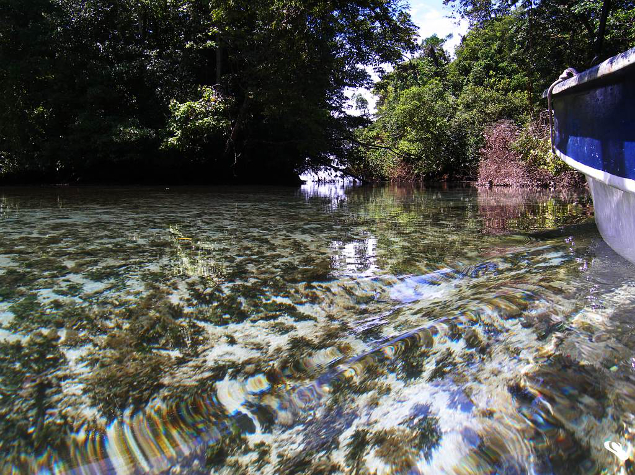
Escudo's Mangrove Channels
